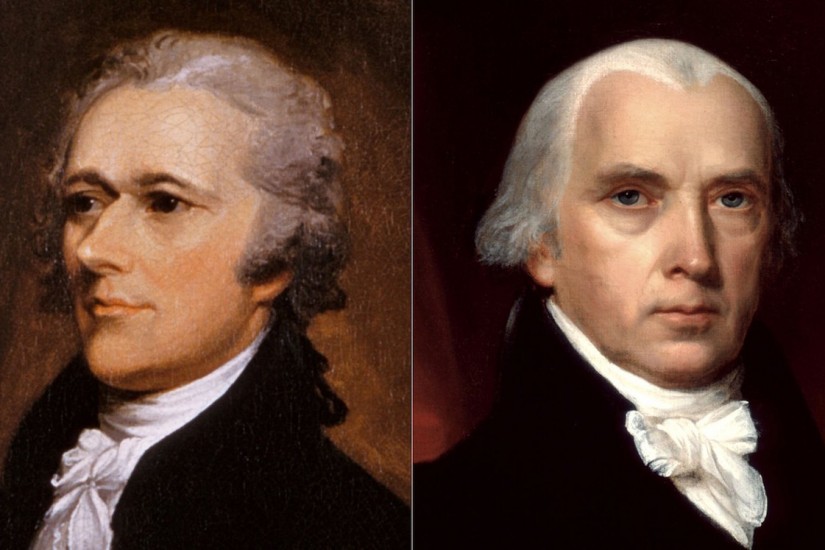The key lesson from the Madison–Hamilton battle is not that one was right and the other wrong, but that their feud represents a clash of fundamental American values. The Constitution was premised on liberalism, republicanism, and nationalism — on the supposition that only a stronger, more prosperous union of the states would protect individual rights and secure self-government. But after the Constitution was ratified in 1789, the principles of republicanism and nationalism came into conflict. It seemed as though the country could become a strong and mighty nation, or it could remain a true republic, but it could not be both. Hamilton was the advocate of vigorous nationalism, while Madison defended the principles of republicanism — and the tension inherent in these principles turned the old friends into bitter enemies.
Hamilton died in 1804, but his death did not bring an end to the conflict of values. Jefferson and Madison had their own ideal of national development, a vision that emphasized small farms as the backbone of a commercially vibrant nation. This was more in keeping with strict republican probity, but it did not do enough to keep the nation independent of European powers. After years of futile efforts to vindicate U.S. neutrality through peaceful means, the country returned to war with Great Britain in 1812. However, the United States was in no condition to wage such a conflict, and was lucky to sign a peace treaty in 1815 that ceded no territory or rights to Great Britain. By war’s end, it was clear to many that the old Jeffersonian vision for the nation was insufficient.
After the war, Madison and his Republican allies resolved to strengthen the nation’s economic foundations, and they embraced Hamilton’s old strategy of mediation. This was not simply a rote repetition of the old Hamiltonian system but an expansion and broadening of it. Whereas Hamilton had privileged the wealthy few, the Republicans invited all kinds of economic factions to receive benefits from the government. So the Second Bank of the United States would have branches dispersed across the country rather than concentrated in the northeast. Industrial protection would take the form of tariffs that benefited whole sectors of the economy rather than bounties or cash payments to a handful of firms. And an ambitious program of internal improvement would benefit many locales by directly connecting the country together via a network of roads and canals. In sum, the postwar Republican program was an effort to finally reconcile Hamiltonian nationalism with Madisonian republicanism.
